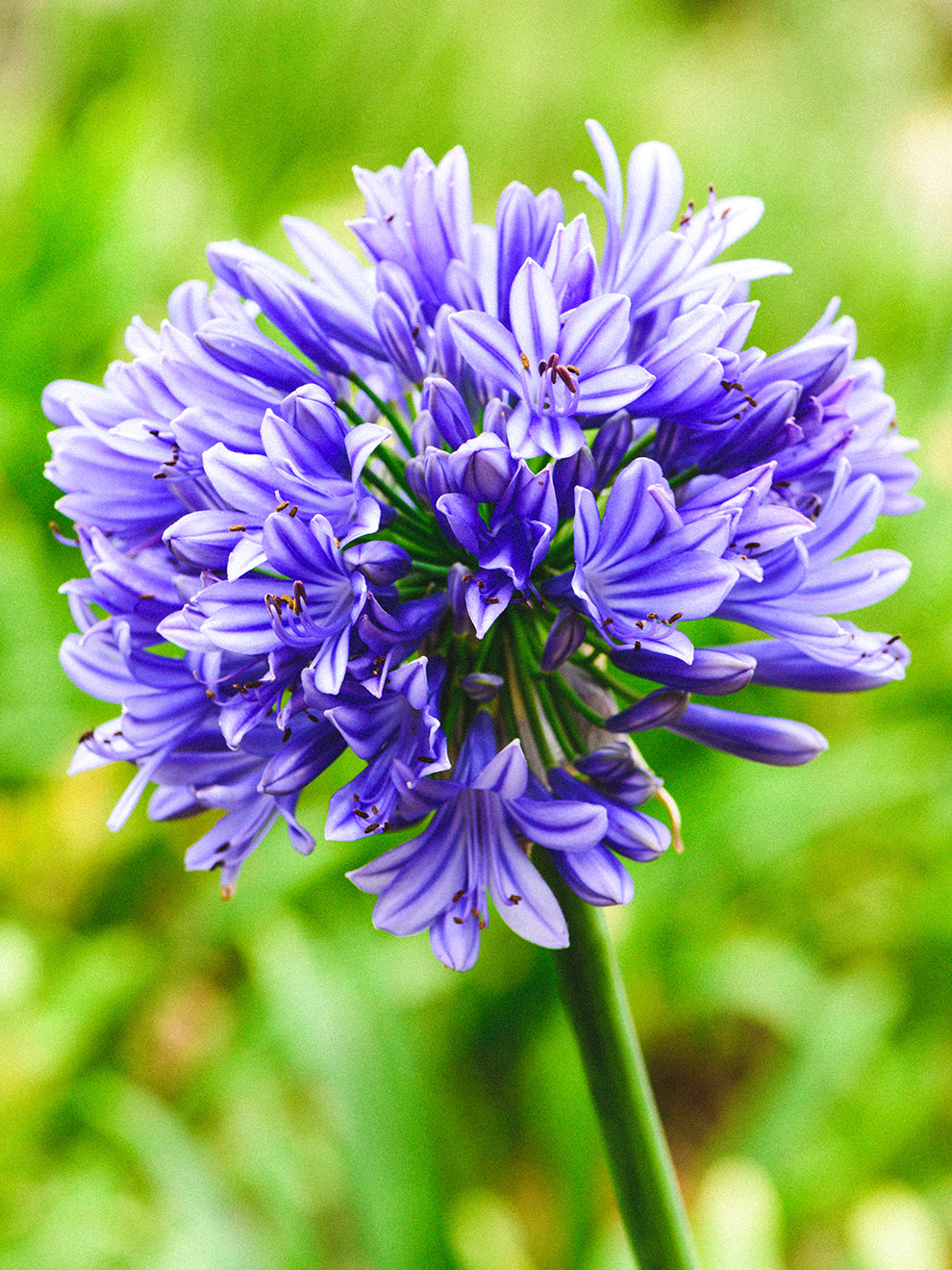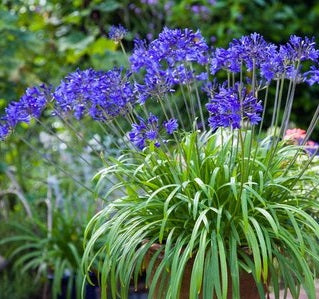Agapanthus Friend Plants: Perfect Pairings for Your Yard
Agapanthus Friend Plants: Perfect Pairings for Your Yard
Blog Article
Grasping the Art of Agapanthus Treatment: Important Actions for Healthy And Balanced Growth and Vivid Blossoms
In the realm of horticulture, the growing of agapanthus stands as a fulfilling endeavor for those who look for to nurture these stylish flowering plants. With their striking blossoms and stylish vegetation, agapanthus has actually captured the interest of garden enthusiasts worldwide. However, attaining optimum growth and vivid blossoms calls for a nuanced technique that includes numerous essential steps. From selecting the ideal range to mastering trimming strategies, the trip in the direction of growing flourishing agapanthus plants is complex and holds the vital to opening the complete capacity of these herb gems.

Picking the Right Agapanthus Range

When picking the right Agapanthus variety for your garden, consider elements such as climate suitability, bloom color, and growth routine. In addition, think about the climate in your area to make certain the Agapanthus selection you choose can flourish in your details conditions. Recognizing the growth routine of various Agapanthus varieties is vital for proper placement within your garden.
Perfect Growing Problems
Thinking about the optimum environmental needs is necessary for successful Agapanthus growing. Agapanthus prospers in well-draining dirt with a slightly acidic to neutral pH degree. When growing, select a place that gets complete sunlight to partial shade. In hotter climates, providing some mid-day shade can avoid scorching of the leaves. Agapanthus plants are sensitive to cool temperature levels and need to be safeguarded from frost during cold weather.
To guarantee healthy and balanced development and lively flowers, plant Agapanthus bulbs at a deepness of about 2-4 inches and room them 8-12 inches apart. Including raw material, such as compost, to the soil can improve drain and fertility, advertising robust root development. Mulching around the base of the plants helps maintain dampness and subdues weed development. Regular watering is vital, particularly during the growing season, to keep the soil continually wet yet not saturated.
Watering and Feeding Tips
Preserving appropriate dampness levels and offering vital nutrients are crucial elements in the treatment program for Agapanthus plants. When it concerns sprinkling Agapanthus, it is vital to strike a balance. If overwatered, these plants favor continually wet dirt yet are at risk to root rot. Throughout the growing period, water deeply as soon as a week, making certain the soil is well-draining to avoid waterlogging. In hotter climates or throughout periods of drought, more frequent watering may be required to keep the dirt evenly moist. Nonetheless, minimize watering in the winter season to stop water logged problems.
Feeding Agapanthus is vital for promoting healthy growth and prolific blooms. Use a well balanced plant food, such as a 10-10-10 formula, in the very early springtime as brand-new development arises. By adhering to Web Site these watering and fertilizing tips, you can guarantee your Agapanthus plants flourish and produce vibrant, lasting flowers.
Pruning Techniques for Agapanthus
Trimming Agapanthus plants at the ideal times and with correct strategies is important for preserving their wellness and promoting optimal development and flowering. The suitable time to trim Agapanthus remains in late winter or early spring before new growth emerges. Beginning by eliminating any kind of dead or yellowing leaves near the base of the plant. Cut them as close to the ground as possible without damaging the emerging shoots.
Deadheading spent flowers can also reroute the plant's energy right into producing more home blossoms instead than establishing seeds. If you want to collect seeds for breeding, leave some blossoms to completely dry and mature on the plant.
Keep in mind to make use of clean, sharp devices to make exact cuts and decrease the risk of presenting conditions. Agapanthus. Regular pruning will assist keep your Agapanthus looking neat and healthy and balanced while ensuring a bountiful display screen of attractive flowers
Dealing With Usual Insects and Conditions
After guaranteeing proper pruning techniques for Agapanthus, it is essential to attend to typical pests and conditions that can affect the health and vitality of these plants. One typical insect that affects Agapanthus is the Agapanthus gall midge.
An additional common concern is fungal leaf area, which provides as dark lesions on the fallen leaves. To avoid fungal illness, guarantee good air blood circulation go to this site around the plants, avoid above watering, and eliminate any infected fallen leaves without delay. Furthermore, Agapanthus plants can struggle with origin rot if they are planted in badly draining soil. To avoid this, plant Agapanthus in well-draining dirt and prevent overwatering. By being watchful and taking prompt action against parasites and conditions, you can help your Agapanthus plants thrive and create vivid blooms.

Conclusion
To conclude, grasping the art of agapanthus care involves picking the ideal selection, providing perfect planting problems, correct watering and fertilizing, suitable trimming strategies, and dealing with usual parasites and illness. By following these necessary actions, you can guarantee healthy and balanced development and vivid blooms for your agapanthus plants. Keep in mind to routinely check and maintain your plants to promote their general health and durability.
To make sure healthy and balanced growth and dynamic blossoms, plant Agapanthus bulbs at a depth of regarding 2-4 inches and space them 8-12 inches apart. By following these watering and feeding pointers, you can ensure your Agapanthus plants thrive and create lively, resilient blooms.
One typical bug that influences Agapanthus is the Agapanthus gall midge. In addition, Agapanthus plants can experience from root rot if they are grown in poorly draining pipes soil. By adhering to these necessary steps, you can make sure healthy and balanced development and vibrant blooms for your agapanthus plants.
Report this page